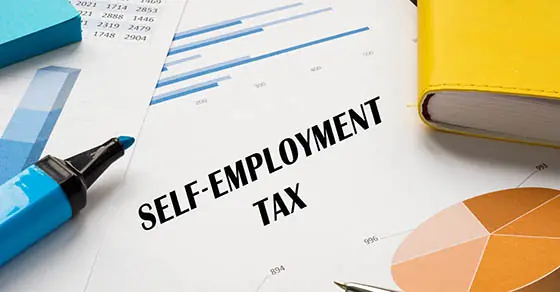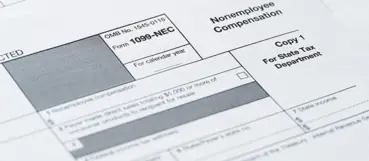Self-employment tax: A refresher on how it works

If you own a growing, unincorporated small business, you may be concerned about high self-employment (SE) tax bills. The SE tax is how Social Security and Medicare taxes are collected from self-employed individuals like you.
SE tax basics
The maximum 15.3% SE tax rate hits the first $168,600 of your 2024 net SE income. The 15.3% rate is comprised of the 12.4% rate for the Social Security tax component plus the 2.9% rate for the Medicare tax component. For 2025, the maximum 15.3% SE tax rate will hit the first $176,100 of your net SE income.
Above those thresholds, the SE tax’s 12.4% Social Security tax component goes away, but the 2.9% Medicare tax component continues for all income.
How high can your SE tax bill go? Maybe a lot higher than you think. The real culprit is the 12.4% Social Security tax component of the SE tax, because the Social Security tax ceiling keeps getting higher every year.
To calculate your SE tax bill, take the taxable income from your self-employed activity or activities (usually from Schedule C of Form 1040) and multiply by 0.9235. The result is your net SE income. If it’s $168,600 or less for 2024, multiply the amount by 15.3% to get your SE tax. If the total is more than $168,600 for 2024, multiply $168,600 by 12.4% and the total amount by 2.9% and add the results. This is your SE tax.
Example: For 2024, you expect your sole proprietorship to generate net SE income of $200,000. Your SE tax bill will be $26,706 (12.4% × $168,600) + (2.9% × $200,000). That’s a lot!
Projected tax ceilings for 2026–2033
The current Social Security tax on your net SE income is expensive enough, but it will only worsen in future years. That’s because your business income will likely grow, and the Social Security tax ceiling will continue to increase based on annual inflation adjustments.
The latest Social Security Administration (SSA) projections (from May 2024) for the Social Security tax ceilings for 2026–2033 are:
- 2026 – $181,800
- 2027 – $188,100
- 2028 – $195,900
- 2029 – $204,000
- 2030 – $213,600
- 2031 – $222,900
- 2032 – $232,500
- 2033 – $242,700
Could these estimated ceilings get worse? Absolutely, because the SSA projections sometimes undershoot the actual final numbers. For instance, the 2025 ceiling was projected to be $174,900 just last May, but the final number turned out to be $176,100. But let’s say the projected numbers play out. If so, the 2033 SE tax hit on $242,700 of net SE income will be a whopping $37,133 (15.3% × $242,700).
Disconnect between tax ceiling and benefit increases
Don’t think that Social Security tax ceiling increases are linked to annual Social Security benefit increases. Common sense dictates that they should be connected, but they aren’t. For example, the 2024 Social Security tax ceiling is 5.24% higher than the 2023 ceiling, but benefits for Social Security recipients went up by only 3.2% in 2024 compared to 2023. The 2025 Social Security tax ceiling is 4.45% higher than the 2024 ceiling, but benefits are going up by only 2.5% for 2025 compared to 2024.
The reason is that different inflation measures are used for the two calculations. The increase in the Social Security tax ceiling is based on the increase in average wages, while the increase in benefits is based on a measure of general inflation.
S corporation strategy
While your SE tax bills can be high and will probably get even higher in future years, there may be potential ways to cut them to more manageable levels. For instance, you could start running your business as an S corporation. Then, you can pay yourself a reasonably modest salary while distributing most or all of the remaining corporate cash flow to yourself. That way, only your salary would be subject to Social Security and Medicare taxes. Contact us if you have questions or want more information about the SE tax and ways to manage it.
© 2024





